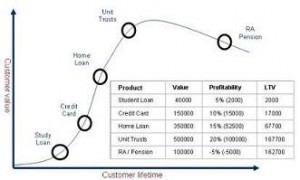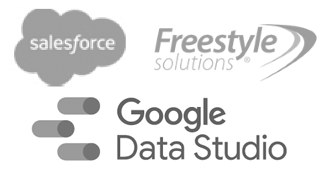 Customer Lifetime Value is a topic that appears often in our blog and others – and yet it still seems to struggle to gain traction. LTV discussions appear from time to time dismissing the concept in whole or in part. Perhaps as marketers, in today’s culture of immediate gratification, we can do better. After all, who among is truly sticking around a “lifetime” to measure this stuff?
Customer Lifetime Value is a topic that appears often in our blog and others – and yet it still seems to struggle to gain traction. LTV discussions appear from time to time dismissing the concept in whole or in part. Perhaps as marketers, in today’s culture of immediate gratification, we can do better. After all, who among is truly sticking around a “lifetime” to measure this stuff?
Some time ago I was introduced to an alternative to Customer LTV – namely, NTV: Near-Term value. I have mentioned NTV casually in previous blog posts, but a couple of new initiatives have put it on the front burner.
One of our clients, who is planning a large prospect mailing campaign, wanted to know more about the prospective yield of their campaign, before investing serious dollars. In other words, will the prospects that they convert generate enough repeat business to justify the campaign expense? Would they be able to break even (or take a small loss) at the campaign level, but win the war if enough big spenders became repeat buyers? Enter NTV analysis – via our WiseGuys Marketing software.
At the same time, I ran across an article about an NTV initiative from Abacus – a large database marketing organization. Elisa Krause, VP of analytical services for Abacus, was quoted as saying:
“…with rising postal increases and rising paper and gas prices, a lot of people were cutting prospect speculation. But when NTV is used correctly they can get a better bang for their buck for the same circulation. We heard from clients that they couldn’t wait a lifetime for payback on a customer, and they needed to generate revenue in a short period of time,” she added.
The article goes on to say that, to discover a prospect’s NTV, Abacus compares a number of first-purchase indicators – including the amount paid at the first purchase, the month or season of the purchase and the origination source and channel. The NTV analysis forecasts a consumer’s net profit over time as well as the point when marketing investments will become profitable.
Finally, a third use of NTV – which we have spoken about previously – is the desire of pay-per-click advertisers to know the true yield of their keyword advertising. In our scheme, the following calculations occur:
- NTV calculates customer acquisition costs, from PPC conversion rates and PPC keyword expenses.
- NTV then backs out cost of goods sold, thus providing a true picture of the net yield.
- The resulting NTV can then serve as a guide for future keyword bidding – higher or lower – depending on a higher or lower NTV result.
 Professor’s Corner:
Professor’s Corner:
A recent marketing best seller introduces the concept of “near time value”, a variation on NTV.
In “Data-Driven Marketing: The 15 Metrics everyone in Marketing Should Know”, Mark Jeffery describes an even more timely approach, using “Near-Term Data”. According to Jeffery,
“campaigns and marketing activities must be designed for agility, with near-time data collection on a time scale shorter than the length of the campaign. The network (Internet or cell phone) is a tool that can facilitate this near-time data collection. Marketers (should) design decision points into the campaign execution plan – and be prepared to act at these stage gates”.
There is general agreement among marketing analysts that the loyalty of on-line shoppers is reduced from what we expected in earlier days from retail and catalog customers. The ease of browsing to compare and contrast product features, as well as the ease of price shopping, would seem to reinforce this belief. If this “What have you done for me lately” trend is true, then perhaps the time has come to consider NTV at least as valuable as LTV.
The net result of these events is a renewed commitment at DMSI to bolster the NTV functionality in our core WiseGuys product. Look for more about the details in posts to come, as we work with current clients to flush out the most useful ways in which NTV metrics can be used. Better yet, share your own ideas as we continue to move this topic forward.









